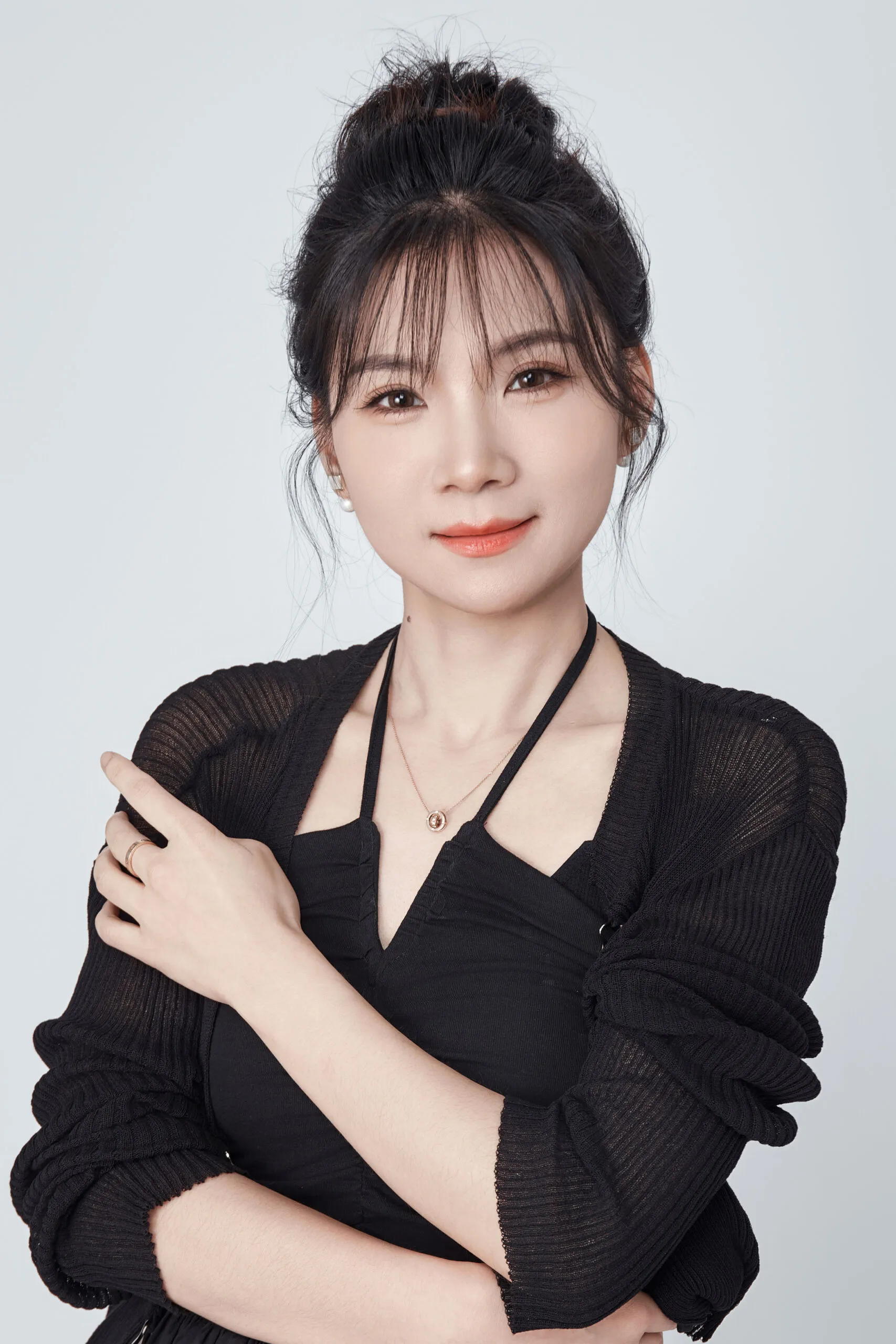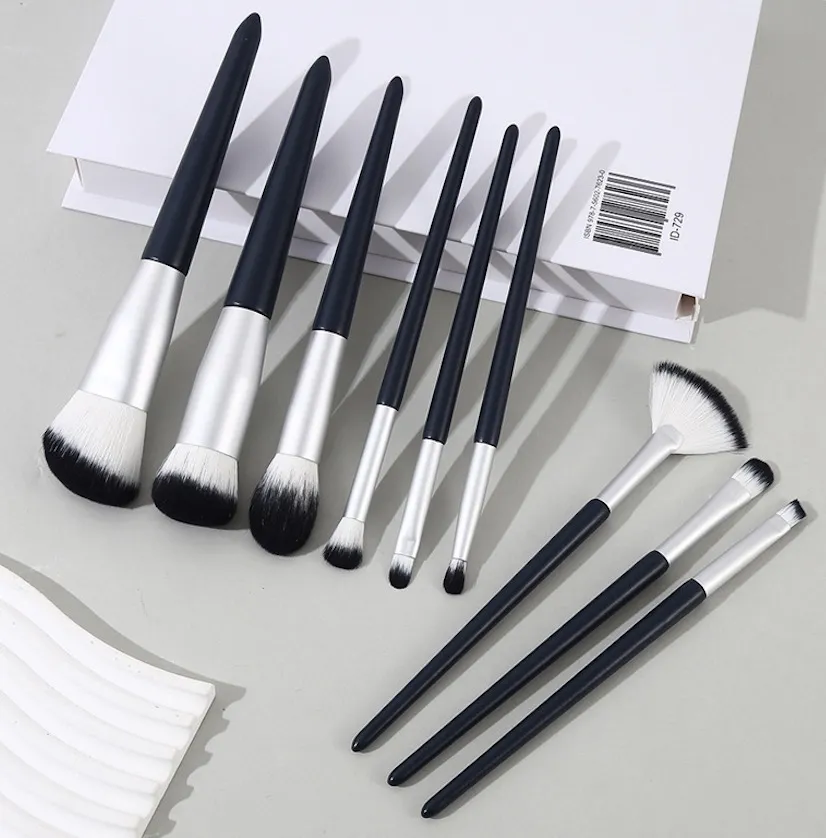Choosing the wrong brush can ruin a perfect formula. Your customers get a streaky finish, and your brand gets the blame. This guide makes the choice simple and strategic.
Choose a kabuki brush1 for dense pickup and buffed, medium-to-full coverage with powders or liquids. Pick a fluffy powder brush for a light, diffused set and soft-focus finish. The right tool depends entirely on your coverage goal and the product formula you’re using.
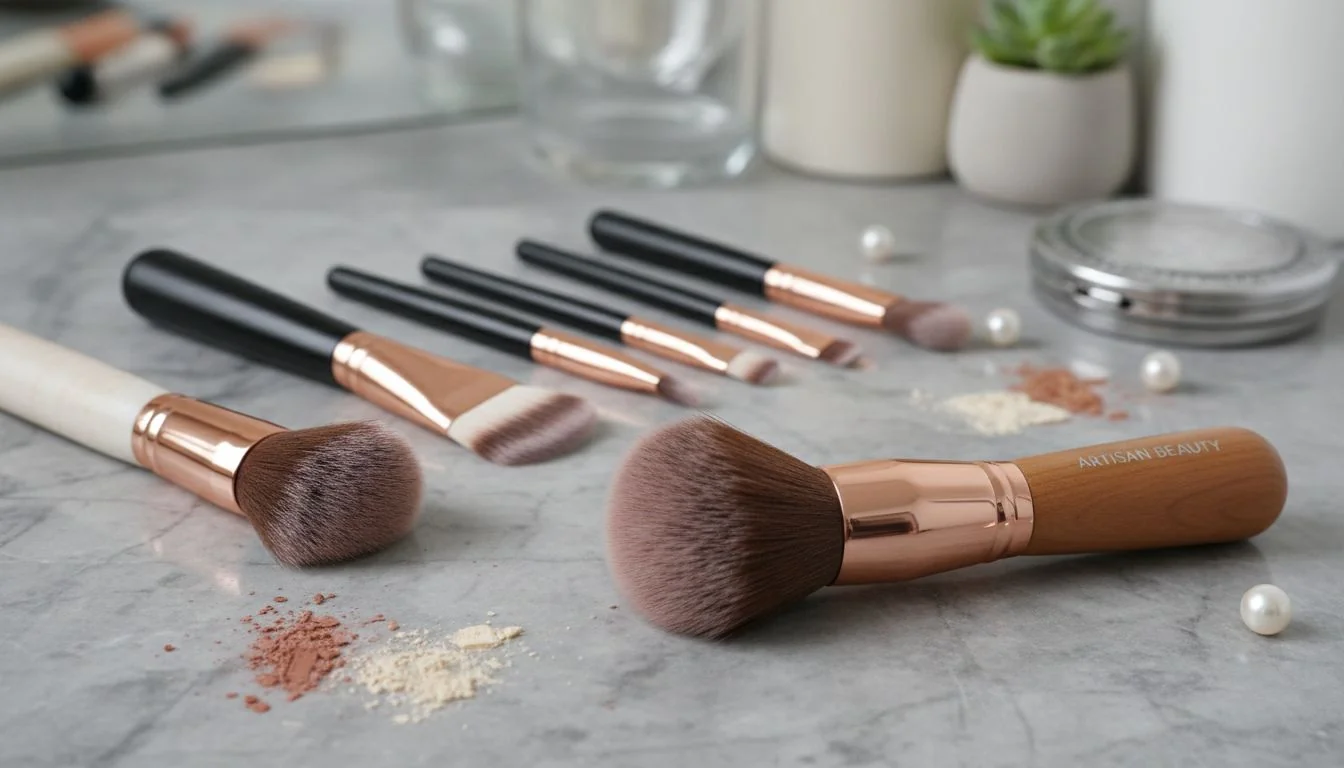
When I first started working on the factory floor, I saw how a tiny change in bristle density could completely transform a brush’s performance. A brush isn’t just a handle with some hair; it’s an engineered tool. For brand founders like you, understanding this is not just about makeup application—it’s about making smart sourcing decisions that protect your investment and build customer trust. Choosing between a kabuki and another brush seems simple, but the details determine whether your product performs as intended. Let’s break down what you really need to know to build a brush line that delivers.
Natural animal hair is always superior to synthetic fibers for makeup brushes.False
Modern synthetic fibers, like high-grade PBT, are engineered to mimic the texture of natural hair while offering better hygiene, durability, and performance with liquid or cream products.
The density of a brush head directly impacts the level of coverage it provides.True
Denser brushes pick up and deposit more product onto the skin, creating higher coverage. Looser, fluffier brushes distribute less product for a sheerer application.
How Do Density and Shape Decide Your Result?
Your new foundation looks patchy or cakey on influencers. They blame your formula, but the real problem is the brush they used. Let’s fix that by understanding the fundamentals.
The density and shape of a brush head are the two most critical factors that determine the final look. Dense, short-bristled brushes provide coverage, while fluffy, long-bristled brushes create a soft, diffused finish. Shape dictates control and where the product goes.
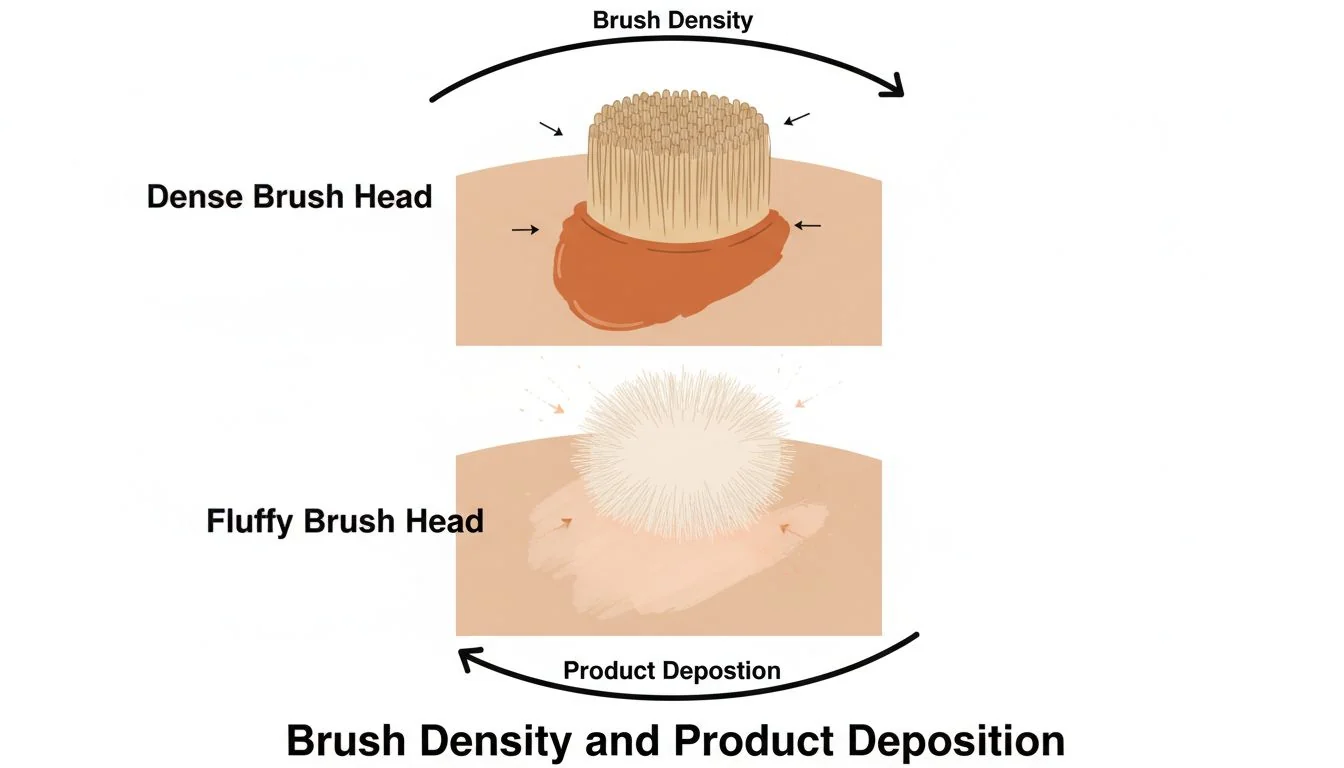
When you’re developing a brush for your line, you’re really designing a specific outcome. Do you want your customer to achieve an airbrushed, full-coverage base or a light, translucent veil of setting powder? The answer dictates the physical specifications of the brush. I’ve seen many brands focus only on the handle color or logo placement, but the real magic happens in the brush head. A dense, flat-top kabuki is designed to press and buff foundation into the skin, which is completely different from a large, fluffy powder brush2 designed to dust product lightly across the face. Understanding this connection is the first step to sourcing tools that make your cosmetic formulas shine.
Brush Anatomy and Its Impact on Finish
| Brush Type | Density | Head Shape | Best For (Formula) | Resulting Finish |
|---|---|---|---|---|
| Kabuki Brush | High | Round, Dome, Flat-Top | Powder, Liquid, Cream | Medium to Full Coverage, Buffed |
| Fluffy Powder Brush | Low | Large, Tapered, Dome | Loose/Pressed Powder | Sheer Coverage, Soft-Focus |
| Angled Brush | Medium-High | Angled, Slanted | Powder, Cream | Sculpted, Defined Contour |
| Flat-Top Brush | High | Flat | Liquid, Cream | Full Coverage, Airbrushed |
All synthetic brush fibers are the same.False
There are significant differences in quality. Premium synthetic fibers like PBT or specialized nylon blends are softer, more durable, and provide better product pickup and application than cheaper alternatives.
A brush's shape is designed for a specific application technique.True
For example, a flat-top brush is ideal for stippling foundation, an angled head follows the contours of the face, and a large dome shape is for broad, sweeping motions.
When Does a Kabuki Win Over a Fluffy Powder Brush?
You need to set your makeup, but you’re worried about it looking heavy. Using the wrong brush can deposit too much powder, ruining your look. Know exactly when to reach for each tool.
Use a kabuki brush when you need more coverage from powder foundations or want to firmly set makeup for longevity. For a light dusting of powder or a soft, blurred finish, a fluffy powder brush is the clear winner.
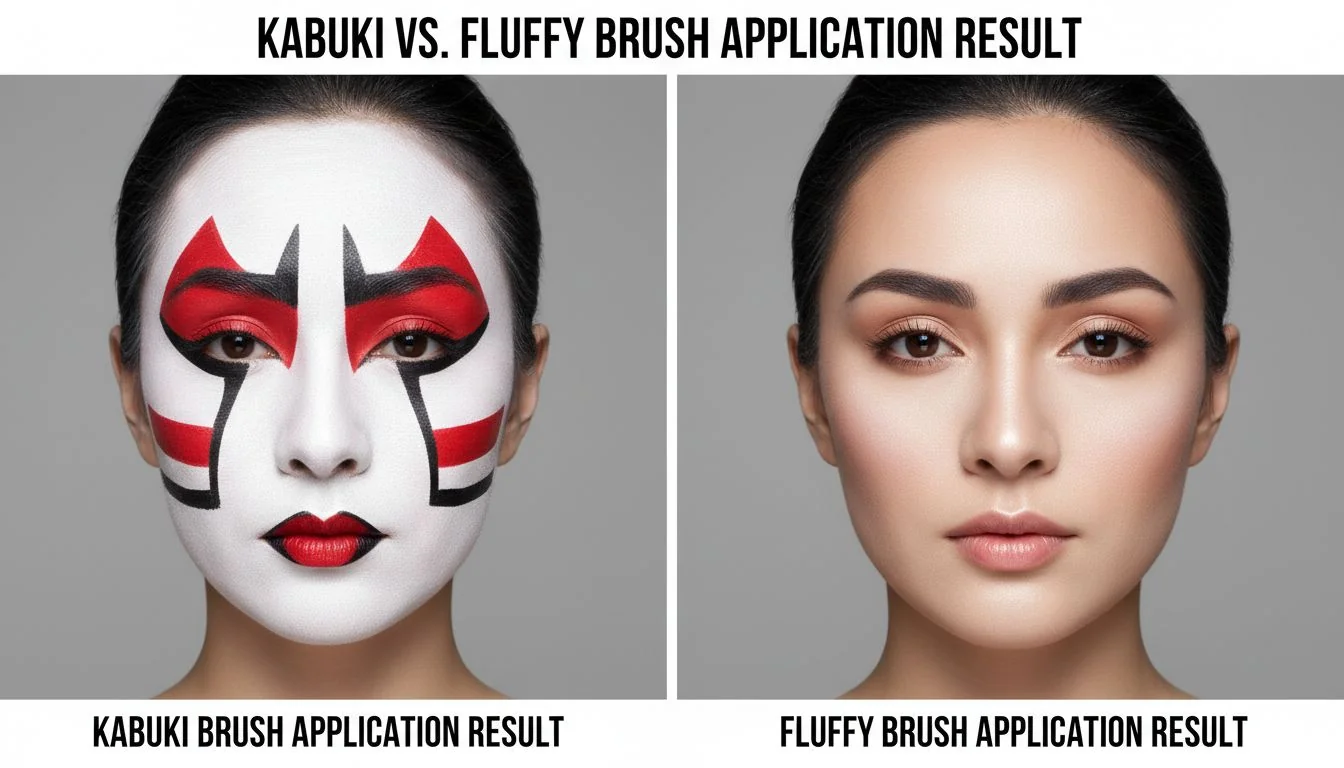
The choice between these two brushes comes down to a single question: are you trying to build coverage or lightly finish your look? Think of it like painting. A kabuki is your dense roller for applying an even, opaque coat. A fluffy powder brush is your feather duster for the final, delicate touches. From a product development standpoint, if you are launching a powder foundation, pairing it with a Kabuki Brush ↗ is a smart move because it helps the customer achieve the intended coverage. If you’re selling a translucent finishing powder, a large Powder Brush ↗ is the perfect partner.
For Base Application and Setting
A kabuki brush excels with both powder and liquid foundations. Its dense bristles don’t absorb much product, so you can stipple (pat) liquid foundation onto the skin for initial coverage and then use circular buffing motions for a seamless, airbrushed finish. For setting powder, a kabuki presses the powder into the skin, which is great for oil control and making makeup last all day.
For Finishing and Light Setting
A fluffy powder brush is your go-to for tasks that require a lighter hand. Its long, flexible bristles pick up less product and disperse it in a wide, sheer veil. This is ideal for setting the under-eye area without causing creasing, dusting a light layer of finishing powder all over, or gently sweeping away any eyeshadow fallout.
You can use the same brush for liquids and powders without cleaning it.False
Mixing formulas without cleaning can lead to cakey application, bacterial growth, and damage to the brush bristles. It's essential to clean brushes between formula types.
Kabuki brushes are versatile enough for both liquid and powder products.True
Their dense structure works well to buff liquid foundation for an airbrushed finish and to press powders for higher coverage and setting power.
Which OEM Specs Truly Matter for Your Brushes?
Your brush samples looked perfect, but the bulk order was a disaster. This inconsistency costs you money, delays your launch, and damages your brand’s reputation. Focus on these key specs to prevent it.
For reliable quality, you must specify the fiber type (e.g., PBT synthetic), packed density, head diameter, and quality control (QC) metrics like shedding tests. These technical details, not just aesthetics, define a brush’s performance.
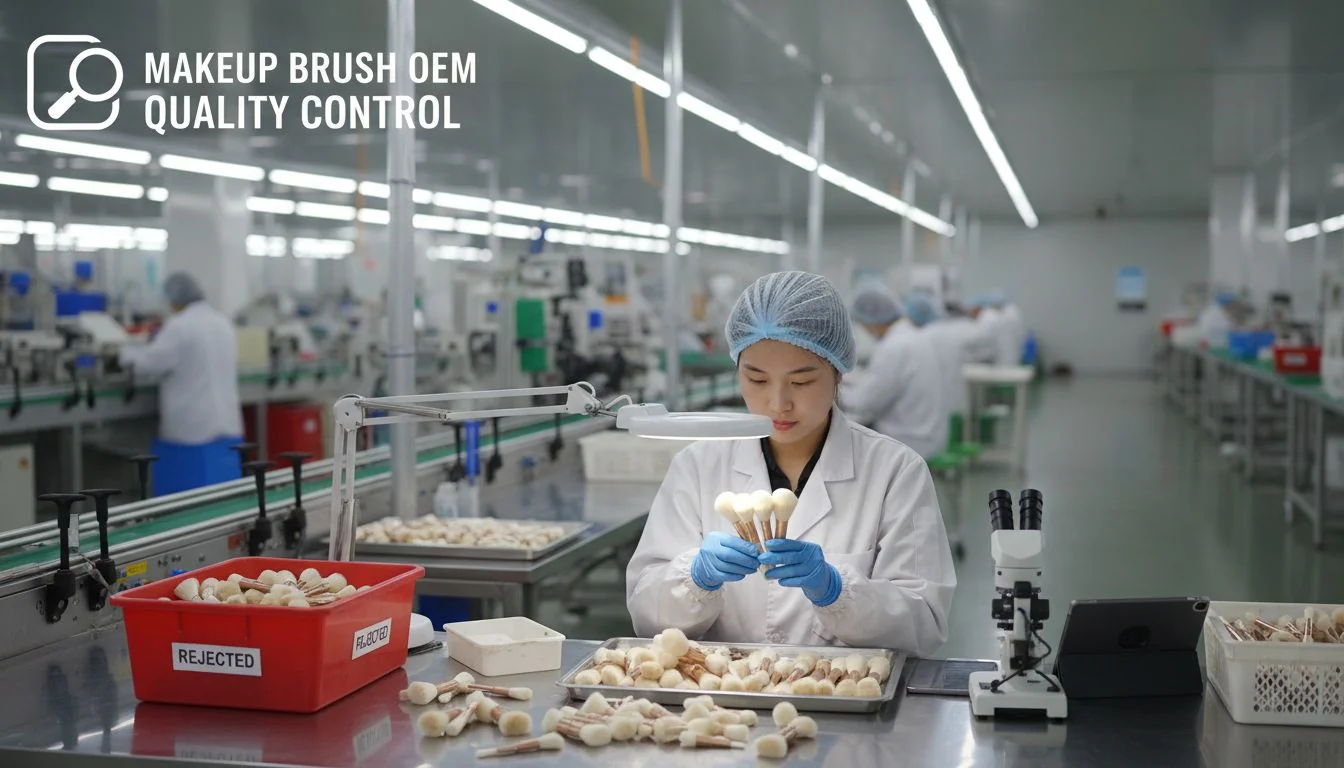
I’ve worked with hundreds of brand founders, and the most successful ones learn to speak the language of manufacturing. Asking a supplier for a "soft, dense brush" is too vague. It leaves too much room for interpretation, which is how you end up with inconsistent bulk orders. Instead, you need to provide clear, measurable specifications. This protects your brand and ensures the 1,000th brush is just as good as the first sample. When you partner with an OEM/ODM supplier, you should be discussing these details. If a factory can’t provide this information or seems confused by your questions, that’s a major red flag. It shows they may lack the processes to guarantee quality at scale.
Key OEM Specifications for Your Tech Pack
| Specification | Why It Matters for Your Brand | What to Ask For |
|---|---|---|
| Fiber Type & Denier | Determines softness, pickup, and hygiene. Cruelty-free claims depend on it. | High-grade synthetic PBT/Nylon blends. Ask for denier (thickness) options. |
| Packed Density | Directly controls coverage level3 and feel. | Specify a target density range (e.g., high-density for foundation, low for powder). |
| Head Diameter/Shape | Affects application speed and precision. | Provide exact measurements (mm) for ferrule width and bristle length. |
| QC Metrics | Guarantees durability and customer satisfaction. Prevents negative reviews. | Request reports on shedding tests, pull strength tests, and glue adhesion. |
| Sanitation Cadence | Important for pro-MUA kits and customer education. | Recommend weekly cleaning; more often for creams/liquids to prevent bacteria. |
A good makeup brush should never shed any bristles.False
It's normal for a new brush to shed a few loose bristles initially. However, continuous and excessive shedding indicates poor manufacturing quality, specifically weak glueing or ferrule crimping.
All makeup brush factories in China offer the same level of quality and service.False
Quality, communication, MOQ flexibility, and certification standards vary dramatically. It's crucial to vet suppliers and check for transparent processes and reliable documentation.
What Market Trends Should Guide Your Brush Sourcing from 2024–2034?
The beauty market is constantly changing. A product line that feels fresh today could seem dated and irresponsible in just a year. This puts your brand at risk of falling behind.
Align your portfolio with two key growth trends: the consumer-driven shift to high-performance synthetic fibers4 and the increasing demand for sustainable, eco-friendly packaging. These trends are shaping the future of the market.
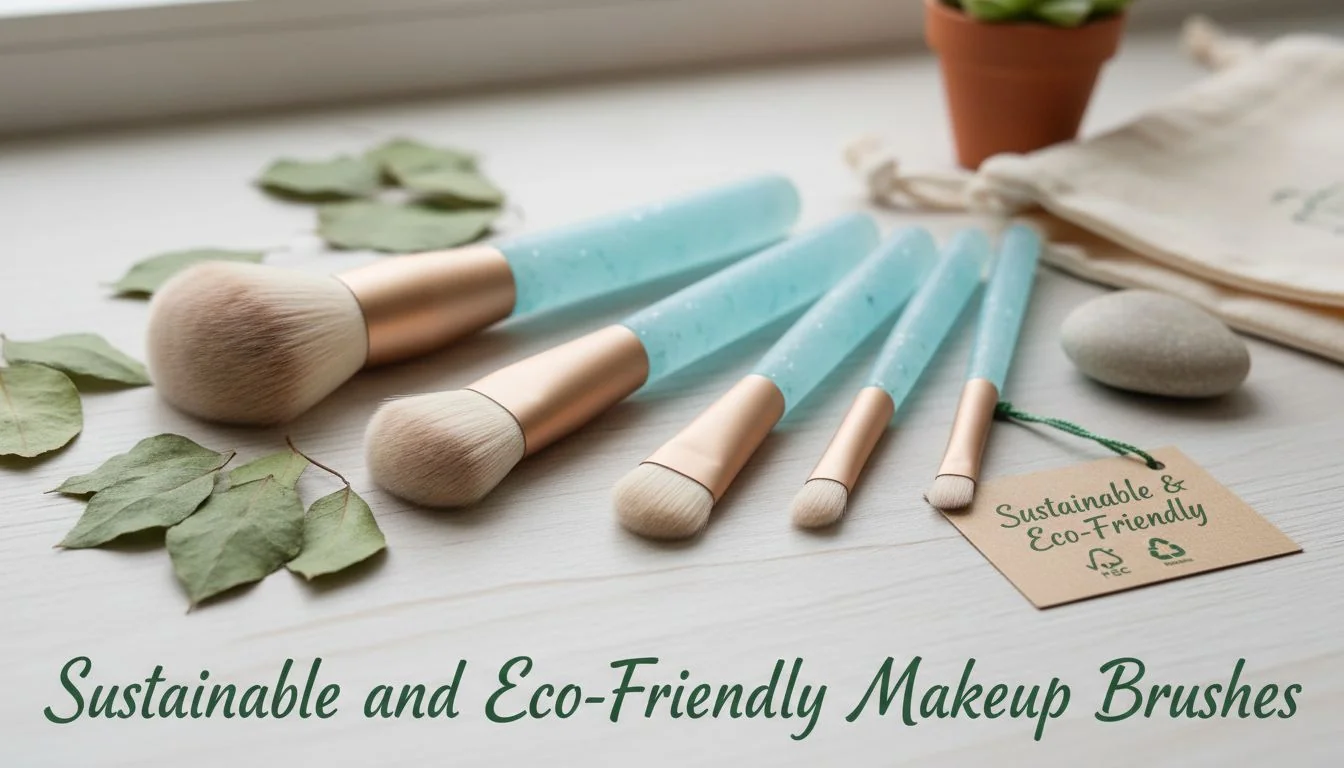
The data tells a clear story. The global makeup brush market is projected to grow from around $7.0 billion in 2024 to nearly $12.9 billion by 2034, with a CAGR of about 6.3%. As a brand owner, you need to ask: where is that growth coming from? It’s not just about selling more brushes. It’s about selling the right brushes. Today’s consumers are more educated and ethically conscious than ever. They demand products that are cruelty-free, vegan, and sustainably packaged. Aligning your product development with these values isn’t just good ethics—it’s smart business. It’s what will keep your brand relevant and desirable in a competitive market. When you plan your next collection, think about how you can incorporate these trends into your sourcing.
How to Align Your Portfolio with Market Growth
- Embrace High-Performance Synthetics: The "synthetic is cheap" stigma is dead. Modern, premium synthetic fibers outperform natural hair in hygiene and versatility, especially with popular cream and liquid formulas. This also meets the massive demand for vegan and cruelty-free products. You can explore our full range of synthetic options in our View All Single Makeup Brush ↗ catalog.
- Prioritize sustainable packaging5: Your packaging is a huge part of your brand story. Opt for recycled materials, FSC-certified wood for handles, and minimalist designs. This resonates with eco-conscious buyers and strengthens your brand identity. We offer a range of customizable, sustainable options through our Private Label ↗ services.
- Offer Curated Sets and Kits: Consumers love value and convenience. Instead of just single brushes, consider creating functional sets, like our Makeup Sponge Set 7 Pcs with Kabuki Brushes ↗. This increases your average order value and provides a complete solution for your customers.
Conclusion
Choosing the right brush means matching its density and shape to your desired finish. For brand owners, focusing on key OEM specs and market trends ensures your line delivers consistent, high-quality results.
References
-
Explore the versatility of kabuki brushes and how they can enhance your makeup application techniques. ↩
-
Learn how fluffy powder brushes can create a soft-focus finish and improve your makeup routine. ↩
-
Find out how different brush types can impact the coverage and finish of your makeup. ↩
-
Discover why modern synthetic fibers outperform natural hair in terms of hygiene and performance. ↩
-
Explore the importance of sustainable packaging in attracting eco-conscious consumers. ↩

